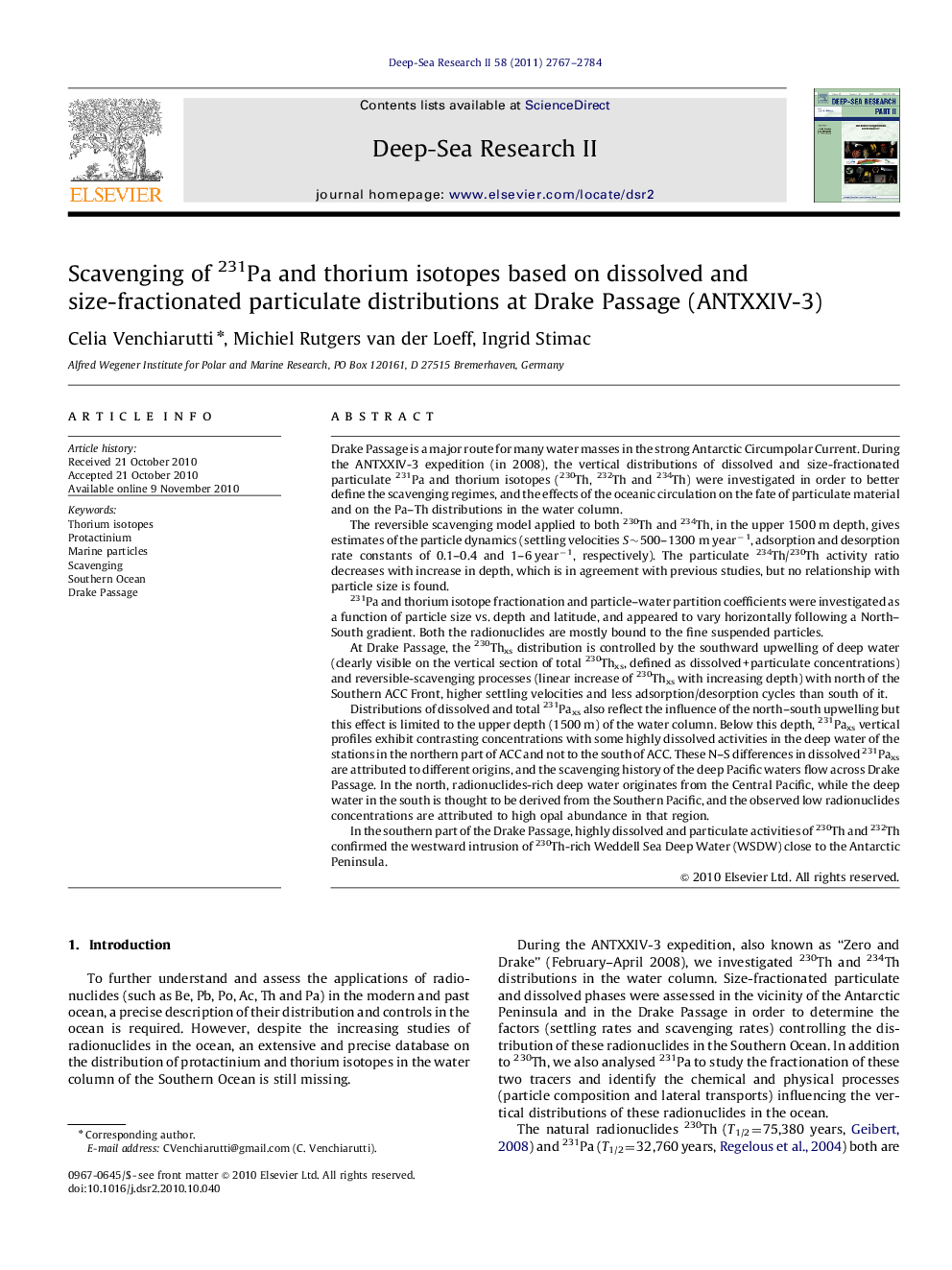| Article ID | Journal | Published Year | Pages | File Type |
|---|---|---|---|---|
| 4536902 | Deep Sea Research Part II: Topical Studies in Oceanography | 2011 | 18 Pages |
Drake Passage is a major route for many water masses in the strong Antarctic Circumpolar Current. During the ANTXXIV-3 expedition (in 2008), the vertical distributions of dissolved and size-fractionated particulate 231Pa and thorium isotopes (230Th, 232Th and 234Th) were investigated in order to better define the scavenging regimes, and the effects of the oceanic circulation on the fate of particulate material and on the Pa–Th distributions in the water column.The reversible scavenging model applied to both 230Th and 234Th, in the upper 1500 m depth, gives estimates of the particle dynamics (settling velocities S∼500–1300 m year−1, adsorption and desorption rate constants of 0.1–0.4 and 1–6 year−1, respectively). The particulate 234Th/230Th activity ratio decreases with increase in depth, which is in agreement with previous studies, but no relationship with particle size is found.231Pa and thorium isotope fractionation and particle–water partition coefficients were investigated as a function of particle size vs. depth and latitude, and appeared to vary horizontally following a North–South gradient. Both the radionuclides are mostly bound to the fine suspended particles.At Drake Passage, the 230Thxs distribution is controlled by the southward upwelling of deep water (clearly visible on the vertical section of total 230Thxs, defined as dissolved+particulate concentrations) and reversible-scavenging processes (linear increase of 230Thxs with increasing depth) with north of the Southern ACC Front, higher settling velocities and less adsorption/desorption cycles than south of it.Distributions of dissolved and total 231Paxs also reflect the influence of the north–south upwelling but this effect is limited to the upper depth (1500 m) of the water column. Below this depth, 231Paxs vertical profiles exhibit contrasting concentrations with some highly dissolved activities in the deep water of the stations in the northern part of ACC and not to the south of ACC. These N–S differences in dissolved 231Paxs are attributed to different origins, and the scavenging history of the deep Pacific waters flow across Drake Passage. In the north, radionuclides-rich deep water originates from the Central Pacific, while the deep water in the south is thought to be derived from the Southern Pacific, and the observed low radionuclides concentrations are attributed to high opal abundance in that region.In the southern part of the Drake Passage, highly dissolved and particulate activities of 230Th and 232Th confirmed the westward intrusion of 230Th-rich Weddell Sea Deep Water (WSDW) close to the Antarctic Peninsula.
